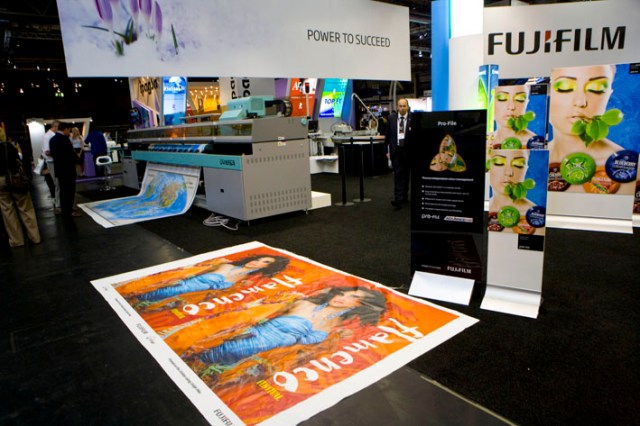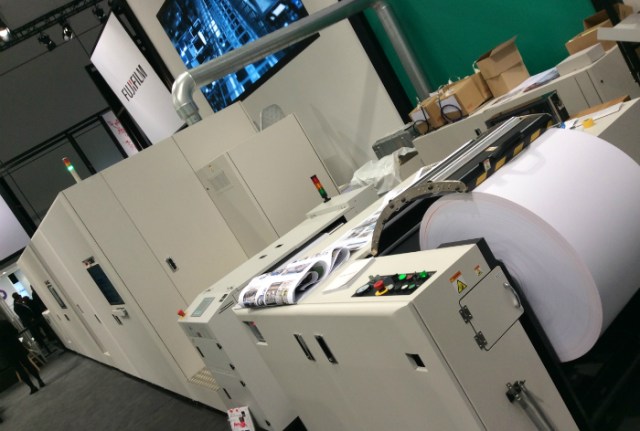
From humble origins as a photographic and motion picture film manufacturer in Japan, Fujifilm continues to diversify and grow, and is now a company with an output that affects the lives of millions.
Two years after launching in 1934, Fujifilm brought its first x-ray film to market, entering diagnostic medical imaging, an area in which it holds a high market share globally.
Fast-forward to 2018, and the company continues to innovate, developing 3D imaging systems which test for breast cancer with a higher detection rate than conventional 2D imaging, alongside its well-established photographic business.
Frank Bite, general manager, Electronic Imaging, Fujifilm, says, “Fujifilm Australia's Electronic Imaging division is involved in the sales and distribution of consumer digital cameras, lenses and accessories that cater to a wide range of users from casual point and shoot products, up to professional interchangeable lens mirrorless systems. Our aim is to provide the smallest, lightest and highest quality products in their class that produce amazing images and an excellent experience for all users. The X series cameras, with APS-C sensors, GFX Medium Format range, and dedicated Fujinon lenses are all vivid examples of the style, cutting edge technology, and usability that Fujifilm have become known for.”
Fujifilm lenses are used by television stations, its data storage solutions are used by some of the largest data centres in the world, and it is working on generating energy by charging electrons in water.
Marc Van Agten, general manager, Recording Media, Industrial Products, and Optical Devices, Fujifilm, says, “We are experts at coating. If you look at our DNA, it's about film and film uses all sorts of materials.
“We need to have a good idea about colours, about chemistry, and nanotechnology, which has morphed into other businesses over time.
“Our traditional Silver Halide film business gave us x-ray film which then moved us into the medical business. We are a major player in the medical field now, with mammography and other imaging equipment.
“And then from the industrial products we have been developing, other things that have spun off, like filtration. In Japan, we are one of the leading players in microfiltration.
“In Japan, if you want to call something draught beer it cannot be pasteurised, whereas in Australia we use the term draught beer as generic marketing term.
“In Australia most of the beer is actually pasteurised at high heat. In Japan, it can only be filtered and in the past they could only sell draught beer close to the brewery because as soon as you start moving beer over long distances while it's got active yeast you can get extra fermentation and all sorts of issues.
“Fujifilm did not invent microfilters but we did make some serious advancements in that field, and our microfilters are now used by most of the Japanese breweries for their draught beer and also to filter the water before the beer is made.
“They are also used in soft drink manufacturing as well and now we're trying to move that product into not just the Australian market but worldwide.”
Fujifilm is also developing a second stream of technology which can be used to filter water, but with applications that expand all the way out to generating energy.
Van Agten explains, “We also have another range of products made in our factory in Tilburg, called ion-exchange membranes.
“What ion-exchange membranes allow you to do is filter things, by charging water with positive and negative ions you can separate some of the salts and chemicals out.
“Desalination is a perfect example of what can be done, and it is a product that long term will have a huge impact on our business. Water is going to be the bigger problem for the world than oil and gas.
“The technology allows us to do a lot of different things. Ion-exchange membranes can also be used to create energy, by trapping the charge that is released when the positive and negative ions meet.”
Lenses for sport and surveillance
Did you catch the Supercheap Auto Bathurst 1000 this year? You might have noticed that it was
shot and broadcast in 4K, a first for any Australian sporting event.
The manufacturer of the lens that made it possible? Fujifilm.
Van Agten says, “This year's Bathurst V8 Supercars race was the first 4K live sporting event shot and transmitted in Australia, and that was shot using Fujifilm lenses. Up until then, you would have been lucky to see it in HD.
“4K, giving you 4000 lines of resolution, and four times the amount of pixels, has now revolutionised sportscasting as we know it.”
Fujifilm even manufactures binoculars used by government bodies, for monitoring sensitive areas.
Van Agten says, “As part of our group we have specialised binoculars which are waterproof, dust proof, and offer 150x magnification.
“We have just supplied binoculars for a government environmental research project.
“We also manufacture security lenses, up to 60x magnification. They are used for long range surveillance and can even see through fog.
“There was a mini-submarine found off the coast of New South Wales, and announced as a dedicated war grave, which our lenses are used to keep an eye on.
“A lens is mounted on a tower 12km away and it is just focused on that area where the submarine is, and if a ship comes too close then it will zoom in and follow it to a certain extent and set off alarms if needed.”
Data storage
In a world where data storage is becoming more and more important, most people would be surprised to hear that many things are still stored on tape.
Van Agten explains, “Tapes are virtually finished in the actual recording of pictures but LTO tape is still going strong.
“Most people say they hear about storing things in the cloud. Once it is in the cloud it still needs to be stored somewhere. What does it get stored on? Either hard drives, SSD or tape.
“Tape is a major product that is used in the IT industry for backup and archiving.
“Because it is tape, you do not need to have a spinning disc going all the time, which you do on a hard drive.
“You have got an automatic firewall because if you put it on the shelf nobody can hack it while still remaining quick to access.
“LTO is an open format owned by three major players, IBM, HP and Quantum.
“They have a consortium which lays down the specifications for the manufacturing of the tape.
“They are now up to LTO 8, which is 12 terabytes and used not only in the IT industry for backup, but also the entertainment and film industry.
“People used to shoot a movie on film, but nobody shoots on film anymore. It is shot on a camera that uses a high performance SD card.
"That information is then transferred to an LTO tape. They make a couple of copies and those tapes are used as an interchange format to move product around where it gets edited and then eventually gets released."
Medical technology
Fujifilm is well-across medical imaging technology, with some of its biggest achievements in the area of mammography, screening for breast cancer.
Surein Fernando, Divisional Manager, Medical Systems, Fujifilm, says, “Fujifilm has innovated in this area with 3D technology (Digital Breast Tomosynthesis), and we are the only company today that is able to do what we call dual mode tomosynthesis.
“So when we look at 3D acquisition for mammography a 3D data set can be captured using either a narrow or wide angle sweep, Fujifilm can do both, providing a much better capability for clearer in-plane image reconstruction.
“We see a huge possibility for the latest technologies like 3D mammography which could help to improve cancer incidence pick-up.
“Predominantly, what the Australian healthcare business is involved with is servicing the public and private sector in radiology.
“That includes your general x-ray, mammography, mobile systems, and healthcare IT, which is what you need in terms of the image acquisition and movement across facilities for reporting and archiving.
“Fujifilm is active in the market in terms of healthcare IT with multiple statewide contracts across Australia for PACS, CV and Vendor Neutral Archive (VNA).
“In particular we have one of the largest installations of its kind with the VNA in the world, which is pretty special in terms of healthcare IT footprint here in Australia.
“This solution allows for any type of clinically relevant image or data file to be stored and retrieved, empowering clinicians for better decision making with provision of the patients entire clinical record.
“We are also well known for our cutting-edge endoscopy and ultrasound solutions that we bring to market. In 2012 the Fujifilm Group acquired a company called Sonosite, which is a leading point-of-care ultrasound company.
“Their history is interesting, they were founded based on a DARPA grant from the US military for the development of a compact portable ultrasound unit that they could use in the battle field.
“Fujifilm Sonosite is now a leader in the point-of-care ultrasound area and has a huge following of
loyal users.
“The company is celebrating its 20 year anniversary this year.Our healthcare business is going from strength to strength with new and innovative technology being continuously introduced to market and the business is focused on patient outcomes, which is really rewarding.
“It is not just commercially driven.”
Digital signage and photo printing
Many printers are unaware that Fujifilm also has a portfolio of digital signage, which operates within the Photo Imaging division, responsible for its photo printing kiosks in retail outlets.
Mary Georgievski, general manager, Photo Imaging Division, Fujifilm, says, “We have a software organisation by the name of Whitech, which developed a photo printing platform called Imagine that operates across multiple platforms, online, kiosk and mobile devices.
“This is one of the only photo solutions globally that is available on all three platforms.
“The division is quite diverse, responsible for Instax cameras, retail printing kiosks and consumables as well as integration and maintenance of these kiosks.
“Digital signage is probably something that people would not be aware that Fujifilm is involved in.
“We work as the integrator across the screens, software and data content management.
“We have also identified the opportunity for ESL (Electronic Shelf Labels) solutions in Australia, which can be managed via a central point.”
Diversified future
With several new platforms preparing to be released in Australia across the coming months, the breadth of the company’s investments and portfolio ensures that its future will remain as bright as its past.
The company is larger than most printers would know, and is at the forefront of developing solutions beyond paper and print.
Comment below to have your say on this story.
If you have a news story or tip-off, get in touch at editorial@sprinter.com.au.
Sign up to the Sprinter newsletter


